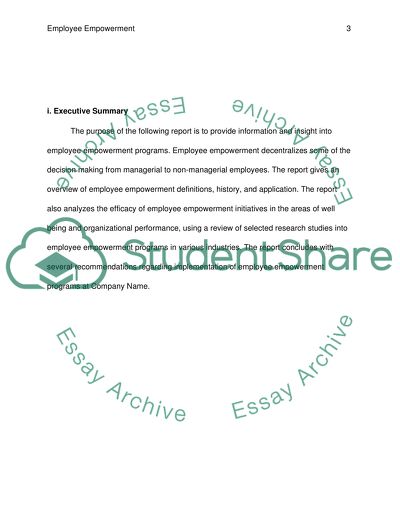Cite this document
(Employee Empowerment Programs Research Paper Example | Topics and Well Written Essays - 3000 words, n.d.)
Employee Empowerment Programs Research Paper Example | Topics and Well Written Essays - 3000 words. Retrieved from https://studentshare.org/human-resources/1583927-a-employee-empowerment-b-studies-about-its-effects-on-employees-well-being-and-organizational-performance-c-the-implications-of-this-for-whether-the-organization-should-increase-employee-empowerment-and-how-best-this-might-be-done
Employee Empowerment Programs Research Paper Example | Topics and Well Written Essays - 3000 words. Retrieved from https://studentshare.org/human-resources/1583927-a-employee-empowerment-b-studies-about-its-effects-on-employees-well-being-and-organizational-performance-c-the-implications-of-this-for-whether-the-organization-should-increase-employee-empowerment-and-how-best-this-might-be-done
(Employee Empowerment Programs Research Paper Example | Topics and Well Written Essays - 3000 Words)
Employee Empowerment Programs Research Paper Example | Topics and Well Written Essays - 3000 Words. https://studentshare.org/human-resources/1583927-a-employee-empowerment-b-studies-about-its-effects-on-employees-well-being-and-organizational-performance-c-the-implications-of-this-for-whether-the-organization-should-increase-employee-empowerment-and-how-best-this-might-be-done.
Employee Empowerment Programs Research Paper Example | Topics and Well Written Essays - 3000 Words. https://studentshare.org/human-resources/1583927-a-employee-empowerment-b-studies-about-its-effects-on-employees-well-being-and-organizational-performance-c-the-implications-of-this-for-whether-the-organization-should-increase-employee-empowerment-and-how-best-this-might-be-done.
“Employee Empowerment Programs Research Paper Example | Topics and Well Written Essays - 3000 Words”, n.d. https://studentshare.org/human-resources/1583927-a-employee-empowerment-b-studies-about-its-effects-on-employees-well-being-and-organizational-performance-c-the-implications-of-this-for-whether-the-organization-should-increase-employee-empowerment-and-how-best-this-might-be-done.


